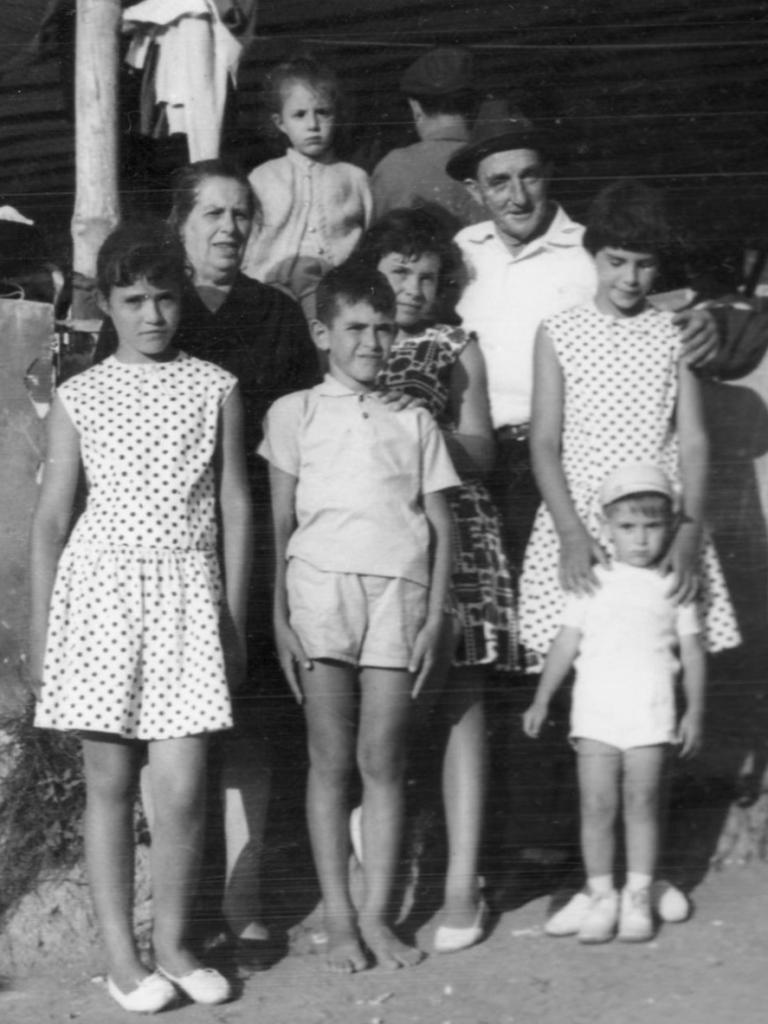
Spanish Families

Figure 1.--This photo was taken in 1960 nearby the Playa de la Ņora (Ņora Beach), Villaviciosa, Asturias (figure 1).
We can see a group of children with their grandparents. Sopanish families still tended to be large. The image is interesting because in the post-World War II period we gradually see Spain beginning to enter the Europeam mainstream. The children are dressed more like otherchildren in Western Europoe. The children woulkd not be out of place in France or Italy. We see fewer barefoot children. In this case the barefoot boy may reflect the fact they are at a beach resort. We believe the family here is not a local family, but a modest income famiky taking a beach vcation. Then reflects the risuing prosperity in Spain as the country becan to participate in the wider European economy recovering from World war II.
|
|
Family information is quite useful for HBC. Here there are helpul lines of investigation. Family information provides both valuable sociolgical information as well fashion information, including insights as to what adult and girls' fashions were associated with the various boys' fashions discussed in HBC. This helps to create a context for the informatiion on boys' clothing we have archived. We have only begun to acquire information on Spanish families because our Spanish archive is still relatively limited. We thus have very little material at this time. Spanich children dressed destinctivelty through much of the 19th century. We note children from well-to-do families dressing in popular European style. The country was, however, very poor and thus the rural peasantry dressed destictively and could not afford fashionable clothes. This continued into the 20th century. Spain did not begin to enter the Europeam mainstream until Generalisimo Franco's death (1975) and entry into the European Union (1986). We have acquired a few family images.
Here we see an unidentified family. They are from Palencla. We are not sure where that is. We think it may be Italy, but Spain is another possibility. A HBC reader writes, "I think that the country concerned is Spain. I have looked in my atlas of Europe and cannot find anywhere named Palencla, but I have found two possible places in Spain. There is a Palancia (Note i and not l) Which is northeast of Valladolid. A second Palenciana which lies between Malaga and Cordoba. Of the two I would go for Palencla which, although not a very big place, is certainly a town of between 50,000 and 100,000 inhabitants, whereas, Palenciana is a very small village and is not on a main road." The portrait is also undated. We would guess the portrait was taken anout 1910. The father's suit looks very modern. The mother's outfit seems appropriate for about 1910 or perhaps a little earlier. There are four children. On first glance they all look to be girls, but we think one might be a boy. First, as their are four children, the chances are that at least one is a boy.They could be all girls, but the chances are that one may be a boy. Second, the child on the far right looks like a boy based on the plainness of the dress compared to the girl beside him. We have not noted girl's so close in age being dressed so differently, in a frilly and plain dress. Much more common is for them to be dressed in similar fancy dresses. Also unusual is having girls about the Third, the child at right also has the only colored dress. Now this might be because this child is the oldest, but combined with the plainess strongly suggest that this child is being set apart. The most likely explanation is because the child is a boy.
We also note a large extended family in 1914, but do not know where they were from. Most of the HBC family pages show the nuclear family. Here we have a large extended family. Judgeing from the way the women are dressed, it was a conservative family. They were obviously a good Catholic family. The nun is presumably a member of the family who has taken vows. We see a mumber of children wearing a variety of outfits. One boy wears a short pants suit. The open collar style was popular.
Asturias Family (1960)
This photo was taken in 1960 nearby the Playa de la Ņora (Ņora Beach), Villaviciosa, Asturias (figure 1).
We can see a group of children with their grandparents. Sopanish families still tended to be large. The image is interesting because in the post-World War II period we gradually see Spain beginning to enter the Europeam mainstream. The children are dressed more like otherchildren in Western Europoe. The children woulkd not be out of place in France or Italy. We see fewer barefoot children. In this case the barefoot boy may reflect the fact they are at a beach resort. We believe the family here is not a local family, but a modest income famiky taking a beach vcation. Then reflects the risuing prosperity in Spain as the country becan to participate in the wider European economy recovering from World war II.
HBC

Navigate the Boys' Historical Clothing Web Site:
[Spanish art]
[Spanish choirs]
[Spanish ethnic groups]
[Spanish movies
[Spanish royalty]
[Spanish youth organizations]
Navigate the Boys' Historical Clothing Web Site:
[Introduction]
[Activities]
[Biographies]
[Chronology]
[Clothing styles]
[Countries]
[Bibliographies]
[Contributions]
[FAQs]
[Spanish glossaries]
[Images]
[Links]
[Registration]
[Tools]
[Boys' Clothing Home]
Navigate the Boys' Historical Clothing national pages:
[Return to the Main Spanish page]
[Return to the Main countries page]
[Australia]
[Belgium]
[England]
[France]
[Germany]
[Ireland]
[Italy]
[Japan]
[Korea]
[Mexico]
[Scotland]
[United States]
Created: 6:40 PM 4/10/2012
Last updated: 6:40 PM 4/10/2012



